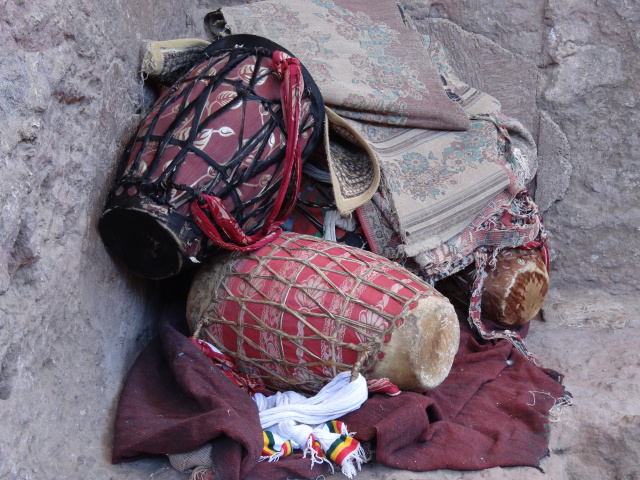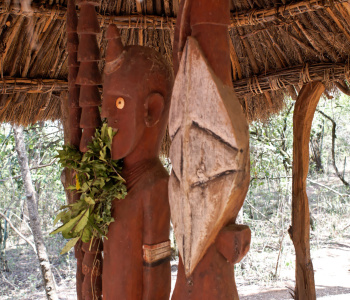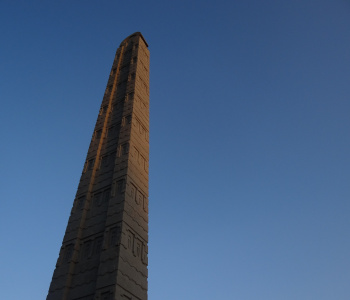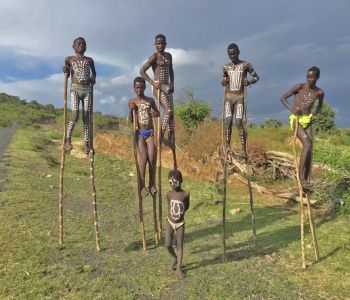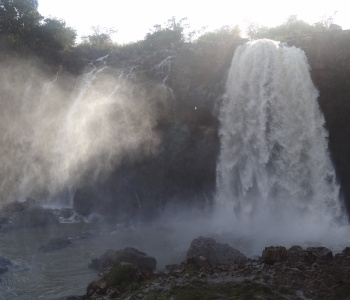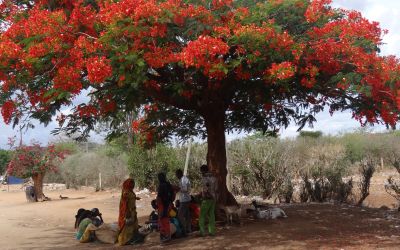From north to south of Ethiopia
This comprehensive tour will take you from the North of Ethiopia, where you'll explore its fascinating past through four must-see sites rich in history and listed as UNESCO World Heritage sites, to the South of Ethiopia, where you’ll discover numerous ethnic groups whose diverse traditions and rich cultural heritage make for extraordinary encounters.
Traveling from the north to the south of Ethiopia is an excellent way to discover the country through its iconic sites.
The North
The northern part of the country is often referred to as the historical route. It has always fascinated travelers. Here is an overview of what awaits you with this program:
- The impressive steles of Axum, which are over 2,000 years old.
- The rock-hewn churches of Lalibela, dating back more than 800 years. The churches are UNESCO World Heritage sites and represent a masterpiece of Ethiopian medieval architecture.
- Gondar, a historic city famous for its castles dating from the 17th century, built during the reign of King Fasilidas.
- The monasteries located on the islands of Lake Tana. Lake Tana is the largest lake in Ethiopia. It is also home to a series of Ethiopian Orthodox monasteries, most of which date back to the 14th century and have become an important pilgrimage site for Orthodox believers.
- The majestic Blue Nile Falls, which originate from Lake Tana.
- A visit to the stunning Simien Mountains to observe families of Gelada baboons and discover the unique flora of the high peaks.
It is in northern Ethiopia that one can witness numerous religious events. Check out our unique pilgrimages.
The South
The Omo Valley is a region located in southwestern Ethiopia, along the Omo River. It is considered one of the most culturally diverse places in Africa. It is home to more than 80 different ethnic groups, each with its own language, culture, and traditions.
The peoples of the Omo Valley have preserved their traditional ways of life, which are based on agriculture, cattle herding, and hunting. They have also developed unique cultural practices, such as scarification, body piercings, and the ritual of bull jumping.
This experience will offer you a unique opportunity to witness ancestral ceremonies and festivals that play an important role in the daily lives of these people. You will meet the Hamer, Mursi, Dorze, Konso, and Geleb, and immerse yourself in their timeless way of life.
In conclusion, traveling from the north to the south of Ethiopia is an excellent travel idea.
The main points
- Essential Ethiopia in one trip
- the rock churches of Lalibela, the black Jerusalem
- Unesco classified sites
- the most emblematic ethnic groups
Welcome at Bole International Airport and installation at your hotel.
After breakfast, visit the National Museum for the various archaeological discoveries including the replicas of Lucy's skeleton.
After lunch, visit the Trinity Cathedral, the mausoleum of Emperor Menelik II.
Night Hotel in Addis Ababa
Early morning direct flight to Bhardar city. On arrival, you will take the road to the Blue Nile Falls called Tis Isat located 30 km from the city. You will reach it by an easy walk through the Amhara countryside.
In the afternoon, boat trip on Lake Tana to visit the monasteries built between the 14th and 19th centuries. The most representative and still in service are: Ura Kidane Mehret and Azwa Maryam.
Night hotel in Bhardar
After breakfast, drive from Bahir Dar to Gondar via a beautiful asphalt road and first stop in the Awra Amba community.
Awra Amba Community
The people of Awra Amba are somewhat different in their social activities. They work together and share, without any profit, individual skill or energy on a specific task or activity. No division of labor. As the man performs a task, the woman does the same task. The founder's name is Zumra, an Ethiopian who will be happy to answer all your questions.
After lunch in Gondar, discovery of the castles of Emperor Fassiladas, its swimming pool, the palace of Empress Minitab, the banquet hall of Emperor Bakaffa.
You will end the day with one of the most beautiful churches in Ethiopia, Debre Birhan (Light of the Trinity) dating from the 17th century, whose wall paintings and ceiling filled with cherubs will not leave you indifferent.
Night Resort in Gondar
This price includes
- Two domestic flights with Ethiopian Airlines
- Accommodation in ***/****double room hotels (local standards)
- Full board breakfast, lunch and dinner
- Non-alcoholic drinks (1 mineral water or 1 soda per person with lunch and dinner)
- Mini bus with AC and/or 4x4 vehicle(s), driver(s) and fuel
- All entries and visits planned in the program
- All transfers
- French-speaking guide for the entire duration of the trip
- Specialized local guides
- Boats on Lakes Tana and Chamo, and canoe on the Omo River
- All government taxes
This price does not include
- International flights
- Visa
- Cancellation/repatriation insurance (optional)
- Laundry service
- Alcoholic drinks
- Fees for videos and photos
- Tips
Single room supplement: 390.00 euros per person

Harar the Holy City
- 18 days / 17 nights
-
Contacts us
- Hotels and lodges
-
Transport :

Why travel with us ?
Value for money
Competitive prices while guaranteeing you quality service
Total flexibility
Our accessibility, our diversity of offers and our commitment to offering experiences adapted to each type of traveler
Services
Our careful drivers, passionate guides selected for their good level of French and respect for the values of Aisha Tours Ethiopia
Guarantees
We have all the necessary guarantees to ensure your peace of mind for your trip: Atout France registration, financial guarantees, insurance and traveler insurance.
Without any other intermediary
With our presence in France and Ethiopia, our advantage is to control your trip without delegating it to another service provider.


